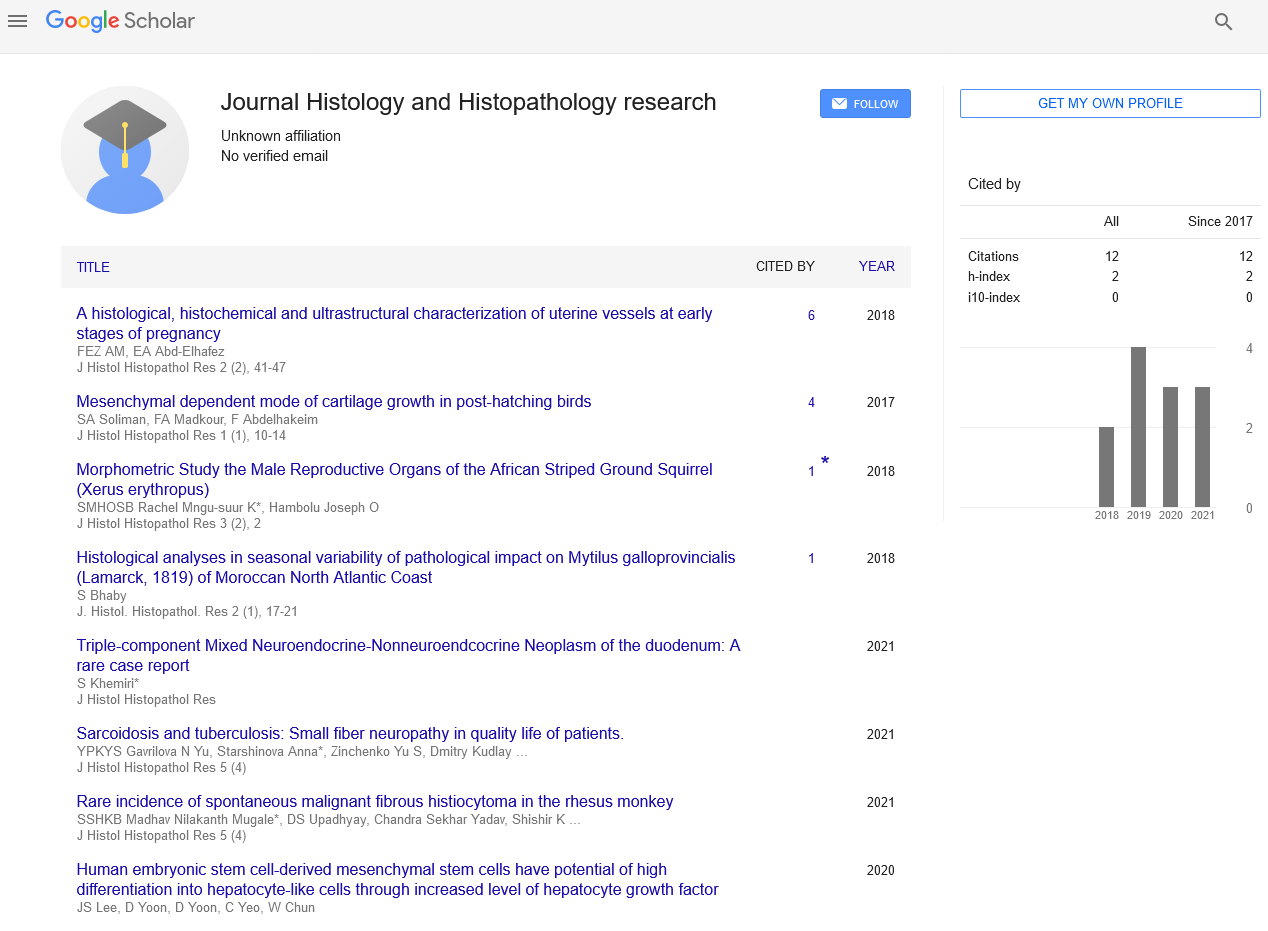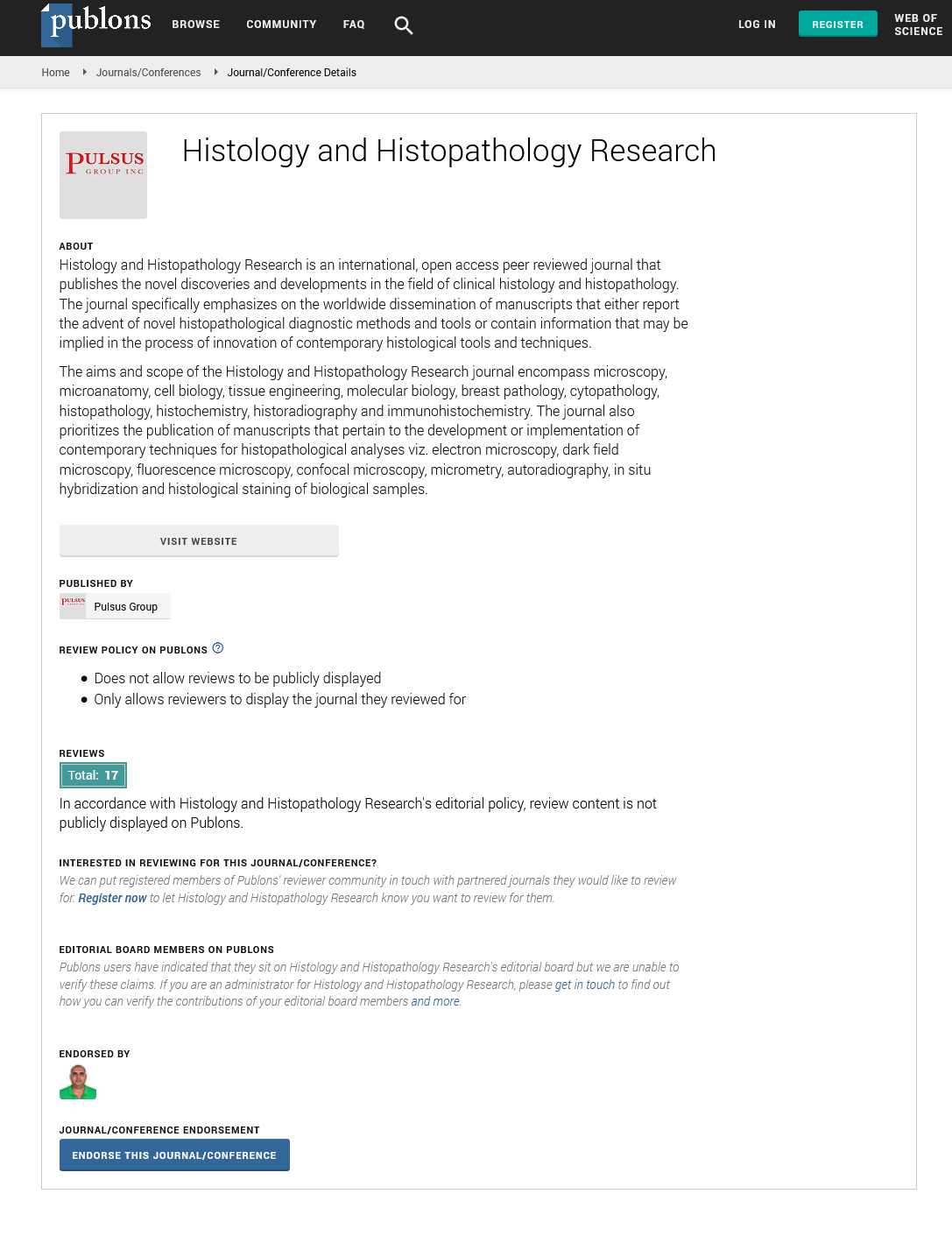A brief note on autoimmune disease: good pasture syndrome
Received: 16-Sep-2021 Accepted Date: Sep 30, 2021; Published: 07-Oct-2021
Citation: Bates Z. A brief note on autoimmune disease: good pasture syndrome. J Histol Histopathol 2021;5(3):1.
This open-access article is distributed under the terms of the Creative Commons Attribution Non-Commercial License (CC BY-NC) (http://creativecommons.org/licenses/by-nc/4.0/), which permits reuse, distribution and reproduction of the article, provided that the original work is properly cited and the reuse is restricted to noncommercial purposes. For commercial reuse, contact reprints@pulsus.com
About the Study
Antibodies attack the basement membrane in the lungs and kidneys, resulting in respiratory bleeding, glomerulonephritis, and kidney failure. Good Pasture Syndrome (GPS), also known as antiglomerular basement membrane disease, is a rare autoimmune disease in which antibodies attack the basement membrane in the lungs and kidneys. Good pasture's antigen is thought to bind the alpha-3 component of type IV collagen. Good pasture syndrome can cause irreversible lung and renal damage, as well as death, if not treated promptly. Corticosteroids and cyclophosphamide, as well as plasmapheresis, which remove antibodies from the blood, are used to treat it.
In 1919, American pathologist Ernest Good pasture of Vanderbilt University identified the condition for the first time, and it was eventually named after him.
Anti-Glomerular Basement Membrane (GBM) antibodies typically assault the kidneys and lungs, but malaise, weight loss, fatigue, fever, and chills, as well as joint aches and pains, are also frequent. Between 60 and 80% of people with the disease have both lung and kidney involvement; 20%-40% have only kidney involvement, and less than 10% only has lung involvement.
Coughing up blood, chest pain (in less than 50% of patients), cough, and shortness of breath are common lung symptoms that appear before kidney problems. Blood in the urine, protein in the urine, unexplained limb or face swelling, high urea levels in the blood, and high blood pressure are all commonly affected symptoms.
While the actual cause of GPS is unknown, the Human Leukocyte Antigen (HLA) system, especially HLA-DR15, is involved in the hereditary predisposition. To allow anti-Glomerular Basement Membrane (anti-GBM) antibodies to enter the alveolar capillaries, an initial environmental insult to the pulmonary vasculature is needed in addition to genetic resistance. Exposure to organic solvents (e.g., chloroform) or hydrocarbons, tobacco smoke, infection (e.g., influenza A), cocaine inhalation, metal dust inhalation, bacteremia, sepsis, high-oxygen settings, and antilymphocyte drugs are examples of such insults (especially with monoclonal antibodies).
Dry cleaning chemicals or the weed killer Paraquat brand have also been suggested as possible insults. Anti-GBM antibodies are generated and distributed throughout the circulation in GPS, causing damage to the lungs and kidneys' membranes as well as capillaries.
Anti-GBM antibodies produced abnormally by plasma cells, causing GPS. The non-collagen domain of type 4 collagen's alpha-3 chain, which is predominantly located in the basal membranes of glomerular and alveolar capillaries, is the primary target of these abnormal antibodies, which causes the condition's obscurely specific symptoms. These antibodies bind to the basement membranes with their reactive epitopes, activating the complement cascade and causing the death of marked cells.
GPS is difficult to diagnose because it might be caused by a variety of other disorders, and it is a rare condition. The most precise way to diagnose is to take a biopsy of the afflicted tissues, particularly the kidney, which is the best-studied organ for getting a sample for anti-GBM antibodies. In addition to the anti-GBM antibodies implicated in the condition, roughly one-third of patients affected also have cytoplasmic antineutrophilic antibodies in their bloodstream, which often appear months or even years before the anti- GBM antibodies. Moreover, in order to avoid false positives, seralogic testing for ELISA assay is usually done by looking for alpha3 NC1 domain area of collagen IV if there is a strong suspicion of the disorder.
Plasmapheresis, a procedure in which the affected person's blood is centrifuged and the constituent components separated by weight, is the basis of treatment for GPS. Anti-GBM antibodies target the sick person's lungs and kidneys, and the plasma is filtered out. The remaining components of the blood (red blood cells, white blood cells, and platelets) are recycled and reinfused intravenously. Immunosuppressive medicines, including cyclophosphamide, prednisone, and rituximab, are used to prevent the production of new anti-GBM antibodies, which can cause severe damage to the kidneys and lungs in most people with the disease. To maintain remission, other, less dangerous immunosuppressant’s such azathioprine can be used.
The five-year survival rate with treatment is >80%, and only about 30% of those affected require long-term dialysis. Patients who require renal replacement treatment (including dialysis) have median survival duration of 5.93 years, according to a study conducted in Australia and New Zealand. Almost everyone who is affected will die of advanced kidney failure or lung hemorrhage’s if they do not receive therapy.
In Europe and Asia, GPS effects approximately 0.5–1.8 per million people per year. It is also unique among autoimmune disorders in that it affects more males than females, is less frequent in blacks than whites, and is more common in New Zealand's Mori people. The start of the disease is most common between the ages of 20 and 30, and 60 and 70.






